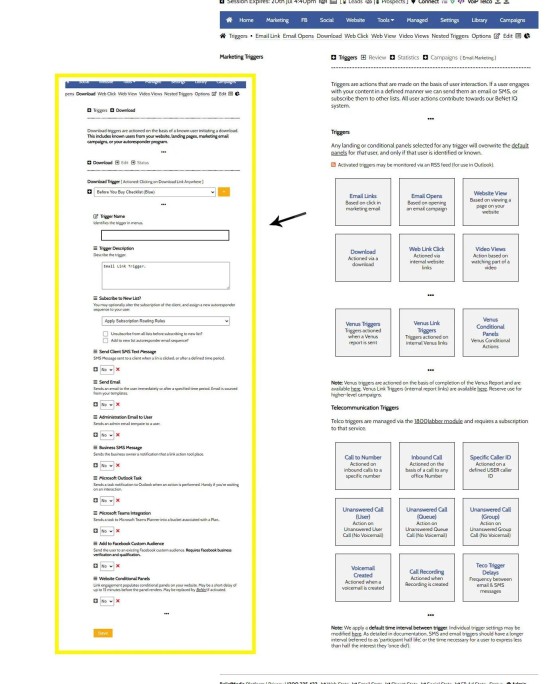What is a trigger? A trigger is an action that causes another action. In your CRM Kanban Board, moving a task from one stage to another will trigger automated tasks, emails etc., and used as part of your digital marketing, a trigger is a *user* action that causes other 'similar' actions to take shape. Again, a common feature in virtually all email software (including ours) is a trigger that fires when a user clicks on a link (or simply opens the email). Yabber triggers can send other emails, alter email subscriptions, or send a text message, and with advanced use, the action can create tasks, shape conditional content, or send webhooks.
Yabber's trigger options are extensive. Other than standard email triggers, we evaluate triggers when a user clicks on an internal website link, or when just visiting a page. Yabber also provides a unique set of triggers that apply on the basis of incoming phone calls (incoming calls to number, missed calls etc). Our integration with the Wistia video platform also supports triggers based on a range of video interactions, such as playing a video or watching only a certain amount.
Triggers are more than just 'doing something'... and if all you're doing is using email triggers, you're probably not doing enough. It a little self-serving to talk about conditional content on the basis of user actions (since we're the only ones crazy enough to do it), but funnel-shaping actions on the basis of triggers is what *should* define a funnel experience. They're a tool that's responsive to user interactions, and they help craft out a pathway for your *specific* user.
User actions tell us something, and triggers make the funnel more like a two-way conversation. Bottom line: the course-corrections triggers apply will ensure user funnel relevance is maintained.





